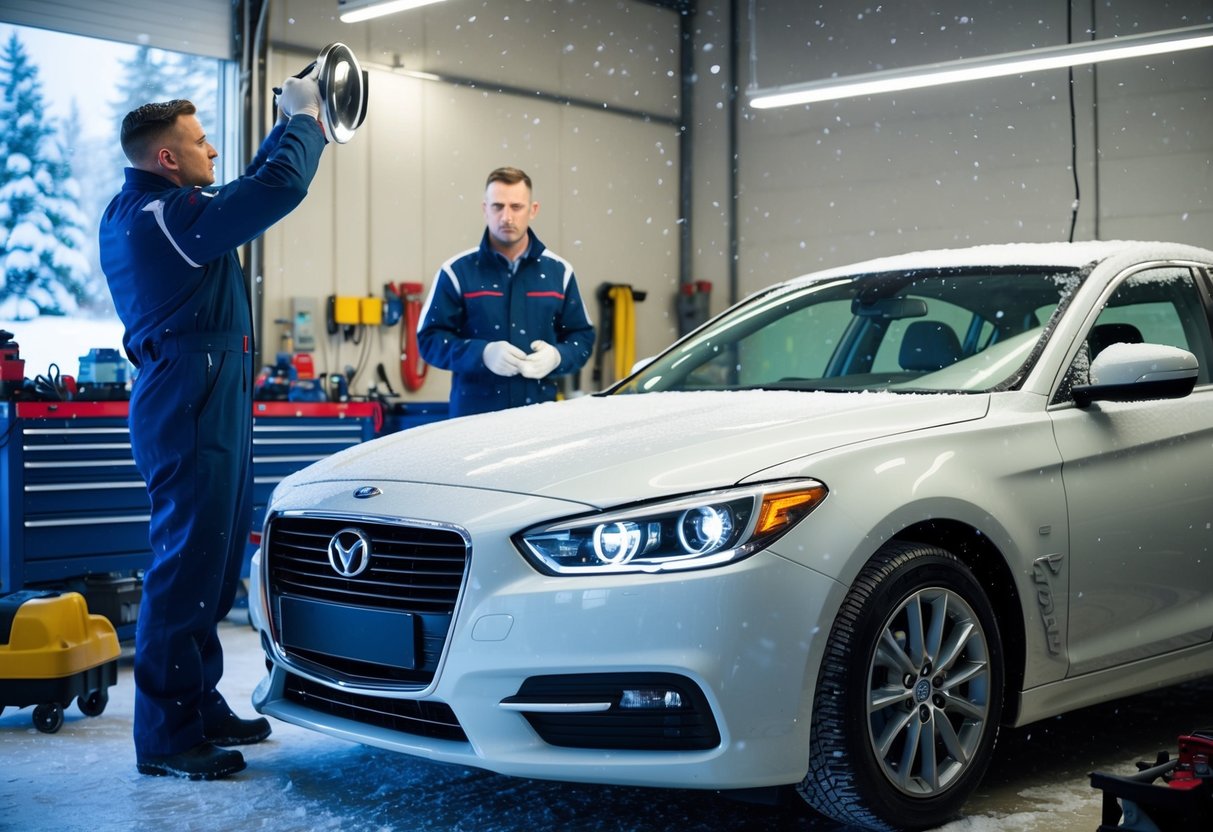
Choosing the Right Winter Tires
Winter tires, often made from softer rubber compounds, maintain flexibility in low temperatures, providing better grip. These tires usually have deeper tread depths and unique patterns designed to channel snow and slush away from the tire.
Snow tires, a type of winter tire, have even more aggressive tread patterns to handle deeper snow and icy conditions. When selecting winter tires, look for those marked with the Three-Peak Mountain Snowflake (3PMSF) symbol, which indicates they meet specific snow traction performance requirements. Rotating winter tires from front to back can also ensure even wear, prolonging their lifespan and maintaining performance.
Protecting Your Car’s Undercarriage from Winter Elements
Winter poses significant threats to a vehicle’s undercarriage, primarily due to road salt and moisture. Addressing these risks with regular maintenance and protective strategies is essential for the longevity of your car.
The Importance of Preventing Rust and Corrosion
Rust and corrosion are common problems during winter. Road salt and moisture create an environment conducive to rust, especially when they mix with the metal parts of a vehicle’s undercarriage. Rust can weaken the structural integrity of the vehicle, leading to costly repairs or even safety issues.
A common recommendation is to apply a rust-proofing spray designed for undercarriages. These sprays form a barrier, minimizing direct contact with road salt and moisture. Regular inspections for signs of rust can help in taking timely action. Visiting an auto parts store for specialized rust inhibitors or consulting a professional can offer targeted solutions for rust prevention.
Undercarriage Cleaning and Protective Measures
Regular cleaning of the undercarriage is crucial during winter months. Hosing down the undercarriage, especially after driving on salted roads, can remove contaminants that contribute to rust and corrosion. Pressure washers are effective but ensuring that all areas are reached is important to avoid missing hidden spots.
Applying a protective wax coating can add an extra layer of protection. Wax repels moisture and road salt, reducing the likelihood of rust forming. Maintenance-free batteries and other undercarriage components should also be checked and cleaned to ensure optimal performance during cold weather. Accessing an auto parts store can provide the necessary tools and products for thorough undercarriage care.
Electrical and Lighting Considerations for Visibility and Safety

For optimal visibility and safety during winter driving, focus on inspecting your vehicle’s lights and maintaining the battery and charging system. Pay particular attention to headlights and battery terminals.
Inspecting Lights and Replacing Bulbs
During winter, adequate lighting is crucial as daylight hours are shorter and weather conditions can reduce visibility. Regularly check all exterior lights, including headlights, taillights, brake lights, and turn signals. A functional lighting system ensures other drivers can see your vehicle clearly.
Replace any burnt-out or dim bulbs immediately. Consider upgrading to bulbs with higher illumination to improve visibility. Clean all light covers to remove dirt and grime that may reduce light output. Ensure headlights are properly aligned to avoid blinding other drivers and to maximize your field of vision.